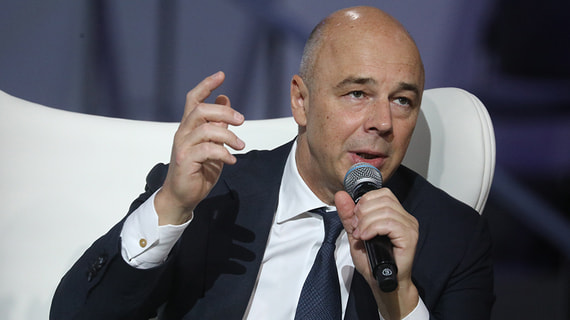Siluanov allowed the resumption of currency purchases before the end of the year
[ad_1]

The Ministry of Finance allows the resumption of purchases of foreign currency within the framework of the budget rule this year, Finance Minister Anton Siluanov said at a briefing on Wednesday. If such a decision is made, the friendly currency, the yuan, will be purchased, he noted.
“If we decide to go out with purchases, then we will proceed from the restoration of the current budget rule, that is, we have a cut-off price of $44.2, and we can send everything above to the National Welfare Fund,” Siluanov said.
It is also possible to accumulate reserves in rubles, but in this case there will be no impact on exchange rates, and a strong ruble is not very desirable both for the budget and for exporters, the minister noted.
The fiscal rule, which called for the purchase of foreign currency and gold with additional revenue from the high oil price (in 2022, the cut-off was at $44.2/bbl) and then transferred to the National Welfare Fund (NWF), was suspended in March against the backdrop of Western sanctions. In June, the Ministry of Finance proposed to use part of the oil and gas windfall to carry out interventions in the foreign exchange market to weaken the ruble. The strengthening of the Russian currency by 1 ruble, according to various estimates, costs the budget 130–200 billion rubles, Siluanov noted. Due to sanctions, the Ministry of Finance has lost the opportunity to influence the exchange rate of the ruble against the dollar and the euro with the help of currency purchases under the budget rule, but this can be done indirectly, through the purchase of currencies of friendly countries, the minister pointed out.
According to the Moscow Exchange, on Wednesday, September 28, the dollar is trading in the range of 58-59 rubles. First Deputy Prime Minister Andrey Belousov in June called the exchange rate in the range of 70-80 rubles / $ optimal for the economy.
The decision on how much money to allocate for the purchase of yuan will be made by the Bank of Russia, which acts as an agent of the Ministry of Finance in the foreign exchange market, Siluanov said. “We will send rubles to the Central Bank, and the Central Bank, as before, will independently decide whether to enter the market or not,” the minister explained.
According to him, next year the Ministry of Finance also plans to purchase foreign currency, but within the framework of the updated budget rule. The new design assumes basic oil and gas revenues at the level of 8 trillion rubles. in the next three years, receipts above this amount are considered excess income and should be directed to the NWF. “It is important for us that the budget is not such a bottomless barrel. We must live within our means. We defined these funds as 8 trillion rubles. basic, all the rest – non-oil and gas, and zero primary balance. That’s all our budget rule,” Siluanov said.
If there are foreign exchange interventions within the framework of the budget rule, then they will be small ($1-2 billion, or 60-120 billion rubles per month), the chief analyst told Vedomosti earlier Sovcombank Mikhail Vasiliev. The exchange rate of the Russian currency against the dollar and the euro in this case will be several rubles weaker than without intervention, the expert believes. In his opinion, the capacity of the yuan on the Moscow Exchange is already enough to carry out interventions for 100-150 billion rubles. per month. (1.2–1.8 trillion rubles per year).
With the current cost of a barrel of Brent at $85, the economically comfortable rate of 70 rubles / $, which was hardly announced earlier by the government, now remains as such, an expert on the stock market believes.BCS investment world” Dmitry Babin. Based on the fact that then the price of Brent averaged $100, then the economically justified cost of a barrel in rubles was assumed to be around 7,000 rubles, he argues: that is, at current oil prices, to reach this level, the dollar should already cost a little above 80 rub. At the same time, this formula does not take into account the large geopolitical discount on Russian oil, which has fallen to 20% from 40% a few months ago, the expert added. In general, it is now difficult to name specific levels of the ruble exchange rate that would be minimally comfortable in terms of state budget revenues and exporters, but it is obvious that they are much higher than the current 58-59 rubles / $, Babin concluded.
[ad_2]
Source link






